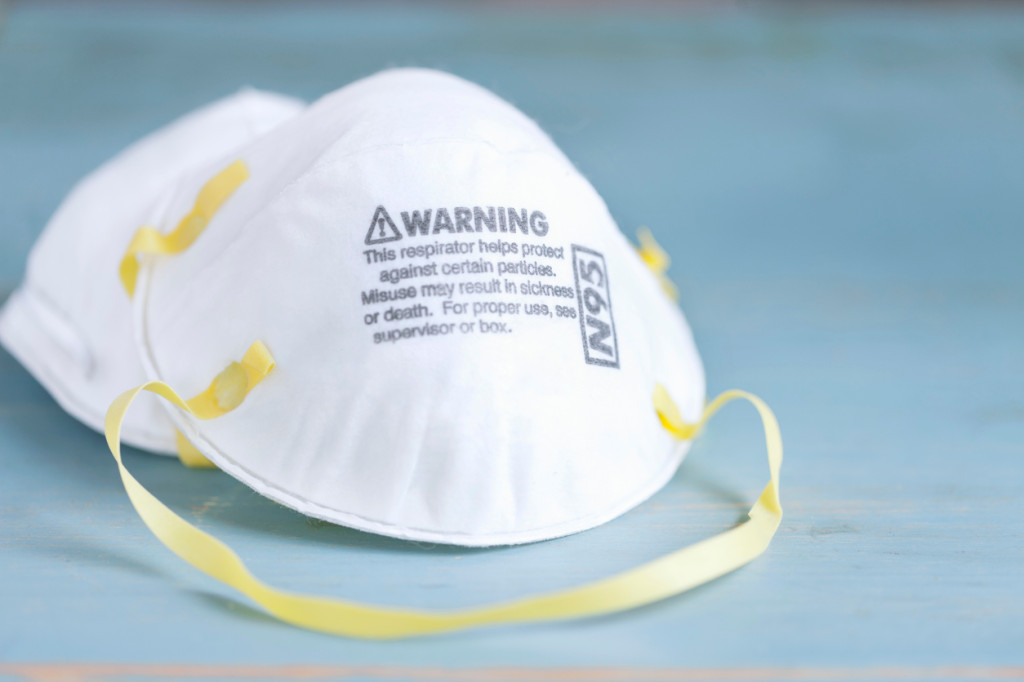BY RACHEL BECKER (CalMatters)
As California ramps up its purchase of protective gear for health care workers, the state also has set a back-up plan in motion: cleaning masks so they can be used again and again.
Face masks called N95 respirators are worn by doctors, nurses and other medical workers to filter out infectious droplets carrying the virus. They aren’t supposed to be reused.
But with shortages of personal protective equipment reported across the country, the Centers for Disease Control and Prevention acknowledges that hospitals may have to consider reusing these masks “as a crisis capacity strategy.”
Mark Ghilarducci, director of the California Governor’s Office of Emergency Services, said today that the state, in partnership with the Federal Emergency Management Agency, will be deploying new sterilization systems from Ohio-based defense contractor Battelle within the next week.
“It’s a technology that is designed to get on the ground and actually bring in a used N95 mask and do a sterilization and cleaning process that makes them basically new again,” Ghilarducci said.
But it’s not that simple, according to Amy Herr, a professor of bioengineering at the University of California, Berkeley, and David Rempel, a professor of medicine at the University of California, San Francisco.
They warn about the potential for cross-contamination when sterilized masks are returned to hospitals. And if sterilized masks don’t find their way back to their original owners, they might not fit well enough to seal out infectious droplets.
“I wouldn’t call them clean masks, I would call them maybe cleaner masks,” Herr said. “They’re not as good as new.”
Herr and Rempel are part of a team of experts who have spent weeks digging through scientific literature to create a set of best practices for decontaminating masks, compiled on a website called N95DECON.org.
“Both of us hope that none of this ever has to be done, and that enough new masks come in that no hospital has to decontaminate any masks at all,” Rempel said.
Battelle’s decontamination system received emergency use authorization from the Food and Drug Administration at the end of March. It works by exposing masks to hydrogen peroxide vapor for more than two and a half hours to decontaminate them, and Battelle claims it can clean up to 80,000 masks in a day.
It’s unclear which hospitals are involved, where the decontamination systems will be located in California and how much it will cost. Battelle spokesperson Katy Delaney declined to comment and the California Department of Public Health did not respond.
The plan, according to a letter to hospitals from the state health department, is for hospitals to label respirators with a hospital ID and collect them on-site. As long as the respirators aren’t soiled with blood, bodily fluids, or cosmetics, they can go into a bag, which is placed in another bag, which is placed into a box for pick up or delivery.
Masks can’t hold up to this kind of cleaning indefinitely; they wear out after about 20 uses. But the hope, Newsom said on Wednesday, is that it could help by “stretching existing resources.”
Herr and Rempel answered questions from CalMatters about dirty masks and decontamination.
(The interview has been edited for clarity and brevity.)
Q: What is so special about N95 respirators?
Rempel: These are different from the surgical masks that tie behind your head and that are more leaky. An N95 is designed to have a seal over the surface and around the nose and chin. When you have it in place, and you do what’s called a seal test — where they put their hands over the mask, and they blow out through their mouth or nose, or they suck in — you don’t feel any air escaping around the side. Also, the N95 has, in the middle, a special electrostatically charged membrane that captures small particles coming through and doesn’t let them go through to the person’s lungs.
Herr: If you are just a citizen or a member of the public, you’re being urged not to wear these N95 masks and to take unused masks to health care centers so that the frontline health care workers can use them. There’s a lot of other ways that we can protect ourselves but healthcare workers can’t. They rely on these special respirators, and they really, really need them from us.
Q: Why aren’t N95 respirators typically re-used?
Rempel: Respirators really should not be reused under any circumstances in a hospital setting because they can become contaminated either from patients you see, who might have an infection, or from the healthcare provider themselves, who might unwittingly have an infection.
Typically what you’re supposed to do is change your respirator between every patient, but in an emergency situation like this, that’s just not happening. There aren’t enough respirators to go around. So healthcare workers are using the same respirator all day long. That’s happening much more in New York and New Jersey and Michigan than it is in California, but I expect right now that process is happening in California, too.
Herr: Our healthcare front-line professionals are human. This goes against the grain of what they’ve been trained and understand to do. We know from discussions with them that they are afraid both for their patients, their own families, and really that spurred a lot of us researchers to action in terms of understanding how can we dig into the science that has been done by decades of other researchers to help find the most information, and the most accurate information we can, and get that into the hands of decision makers.
Q: What methods have you found work best for decontaminating masks?
Rempel: We’ve narrowed it down to three different methods that seemed the best. One is UV light. The second one is hydrogen peroxide vapor, which I’ve been focusing on, and the third is moist heat.
Herr: We’ve been looking at UV light, the C-component of UV light, which is used for sterilization, and working to translate those protocols into really digestible approaches that people can adopt. It is used for sterilization because it breaks down the DNA and RNA, the nucleic acids that are inside these viral particles, when exposed long enough. And that’s kind of the catch. Just like any light, there can be shadows that can be created. So if there are viral particles in those shadows, they may not be inactivated.
Q: The Battelle system that California will be deploying uses hydrogen peroxide vapor. How does that system work?
Rempel: There’s very strong evidence that it both decontaminates and kills any microorganisms on the mask. And it can be used over and over again up to 20 cycles without damaging the mask’s filter, or the straps or any other part of a mask. Some of the other systems, like the moist heat, and some other processes can damage the mask itself or the straps over a shorter number of cycles, so it’s obviously dangerous if a health care worker uses one of those masks, they might be using a mask that’s not protective.
Q: What methods don’t work for decontaminating masks?
Rempel: There are other methods that people are thinking about that clearly don’t work and damage the masks — like using alcohol, or maybe storing the mask overnight for a day, or dunking the mask in peroxide, or other chlorine types of solutions. Those damage the masks and should not be used.
Herr: We were thrilled when CDC guidance came out. There are a lot of consumer products that are out there, and there are even some medical products that are out there that do not provide enough UV-C light to be effective for face mask decontamination. There are specific ways that UV-C light must be applied for it to be safer and effective.
Q: Are there any pitfalls you can foresee with this new decontamination effort?
Herr: When we’re thinking about these processes, for making the masks safer — not safe, but safer — for reuse, all of the handling of the mask before and after they get to the treatment is super important.
Trying to get the masks back to the initial user because the masks conform to the shape of your face. That whole handling process is absolutely critical because of that, but also because of wanting to avoid cross contamination during the handling.
Rempel: I would just say that the fit issue is an important one, that making sure that the masks aren’t deformed and they come back to the original user is a key element, and that the masks aren’t decontaminated more than 20 times. That’s the limit; if you go over 20, the mask straps can break.
Q: What would you want to see in terms of shipping and handling to ensure there’s no cross contamination and that the cleaner masks get back to the right people?
Rempel: There’s a way of labeling the mask with a person’s name and the hospital and the site that it comes from, so that’s done properly. They’re placed in a special bag. The shipping process has to be done properly, and then obviously the return process to get the right mask back to the same person in a way that doesn’t allow for contamination because you don’t want people to be sticking their hands in a bag to pull out their masks using dirty gloves, for example.
CalMatters.org is a nonprofit, nonpartisan media venture explaining California policies and
politics.




